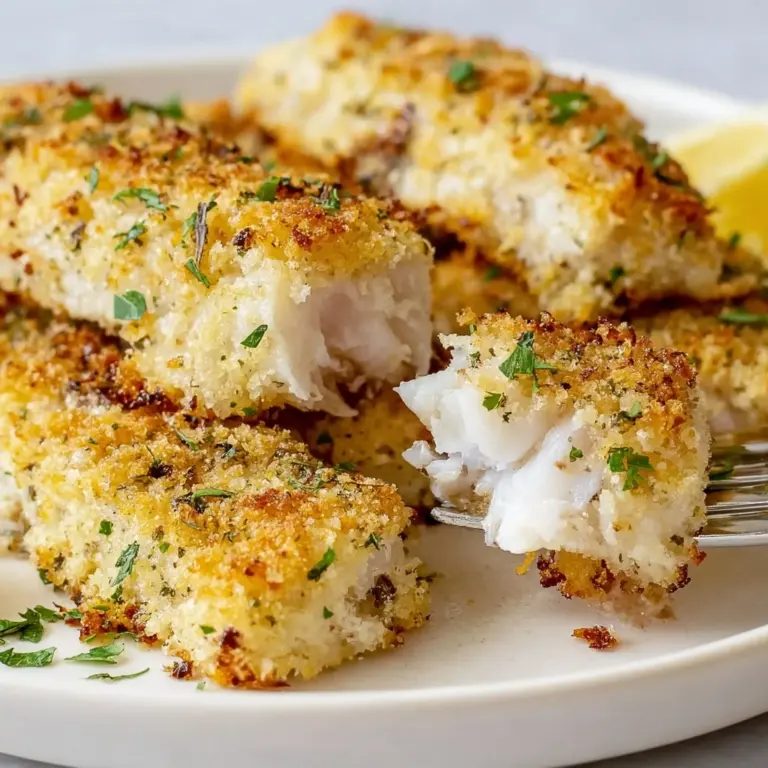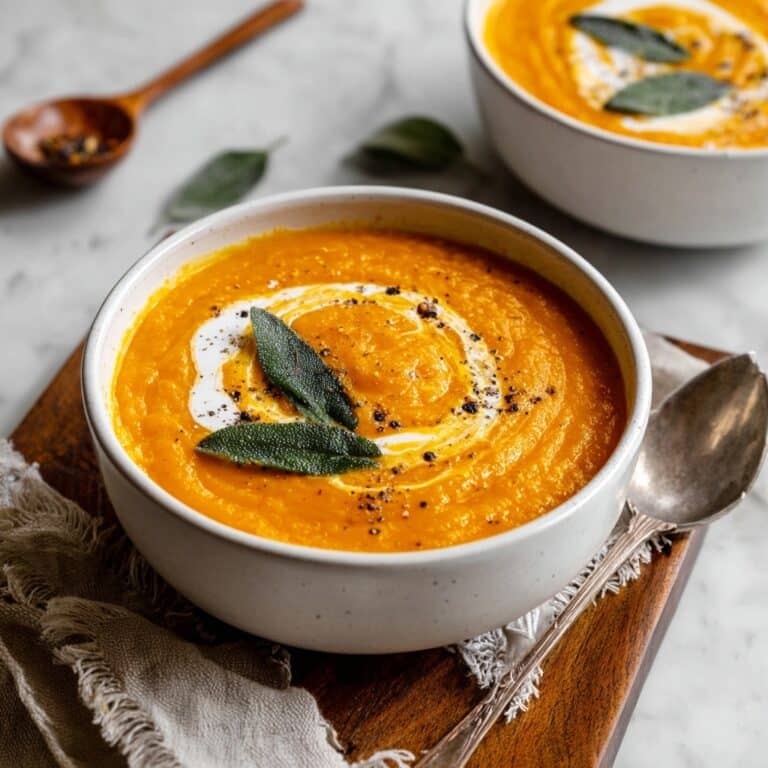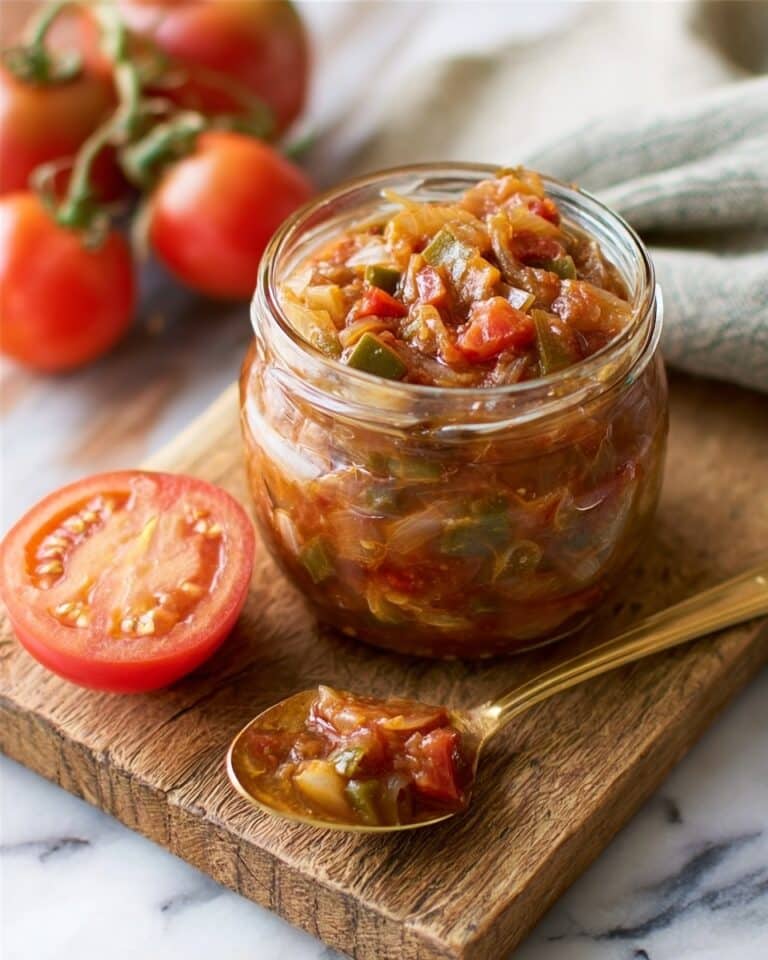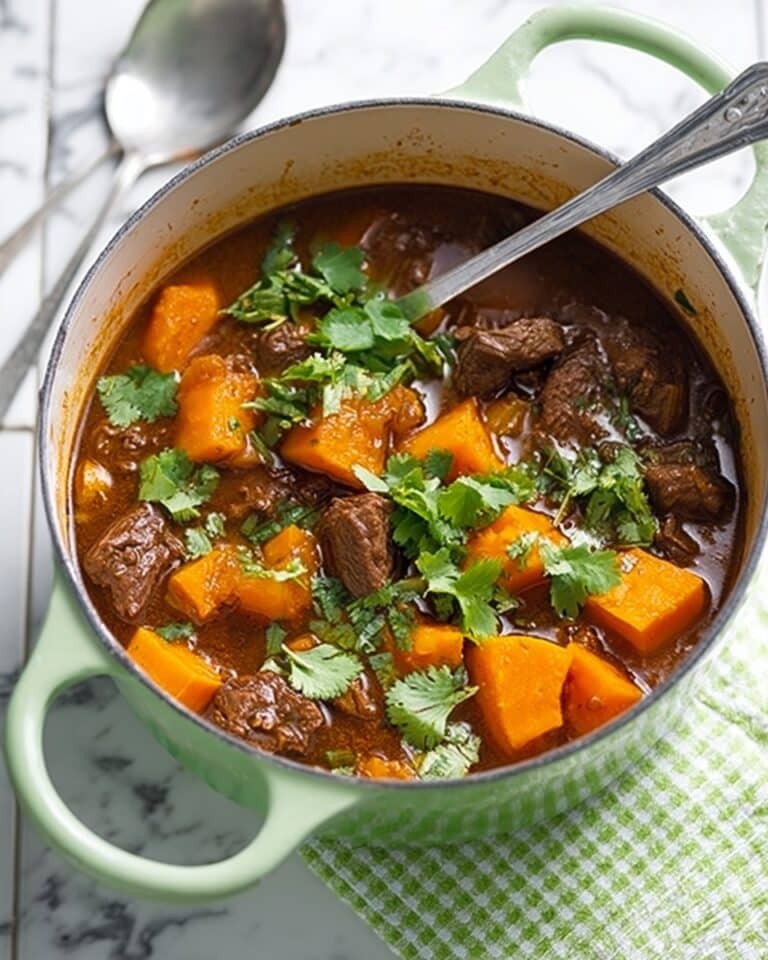Baked Salmon Fillets Dijon Recipe
The magic of cooking lies in simplicity, and this recipe for Baked Salmon Fillets Dijon truly nails it. Picture tender, flaky salmon fillets enveloped in a luscious, tangy Dijon mustard glaze, kissed by honey and brightened with fresh lemon juice. This dish strikes the perfect balance between rich and refreshing, making it a go-to weeknight dinner or an impressive option for guests. Whether you’re a seasoned cook or just starting out, these flavors come together effortlessly to create a meal that feels both elegant and heartwarming.
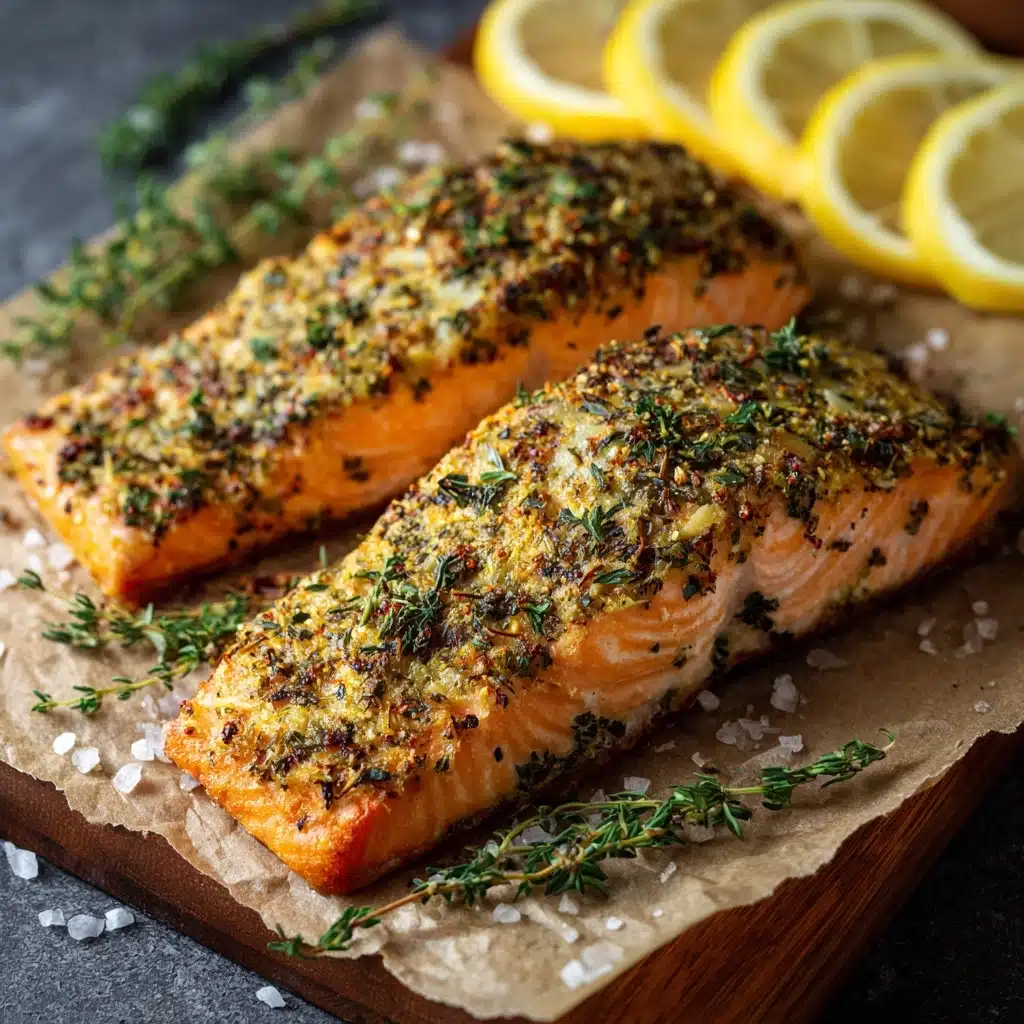
Ingredients You’ll Need
These ingredients are straightforward yet essential for building the flavor layers that make the Baked Salmon Fillets Dijon so irresistible. Each one plays a key role: mustard adds zing, honey brings sweetness, lemon provides brightness, and garlic deepens the savory notes—all culminating in a perfectly balanced dish.
- Salmon fillets (4, 6 oz each): Choose fresh, firm fillets with skin on for the best texture and flavor.
- Dijon mustard (4 tablespoons): The star of the glaze, it delivers a smooth, tangy punch without overpowering the fish.
- Olive oil (2 tablespoons): Adds richness and helps create that beautiful glaze on the salmon’s surface.
- Honey (1 tablespoon): Balances the mustard’s heat with a natural sweetness.
- Fresh lemon juice (1 tablespoon): Brightens the dish with a burst of acidity that livens up every bite.
- Garlic (2 cloves, minced): Infuses a subtle savory depth.
- Salt and pepper (to taste): Simple seasonings that enhance all other flavors.
- Fresh parsley or dill (optional garnish): Adds a pop of color and a fresh herbal note to finish the dish elegantly.
How to Make Baked Salmon Fillets Dijon
Step 1: Preheat and Prepare the Oven
Start by preheating your oven to 400°F (200°C). This temperature is ideal for cooking the salmon quickly while locking in moisture and flavor.
Step 2: Whisk the Dijon Glaze
In a mixing bowl, combine the Dijon mustard, olive oil, honey, lemon juice, and minced garlic. Whisk these ingredients thoroughly until you end up with a glossy, smooth glaze that will coat every inch of your salmon.
Step 3: Season and Arrange the Salmon
Place the salmon fillets skin side down in a baking dish. Sprinkle salt and pepper evenly over the top to season. This initial seasoning creates a flavor base that complements the vibrant Dijon glaze beautifully.
Step 4: Brush on the Dijon Mixture
Using a pastry brush or spoon, generously coat each fillet with the mustard glaze. Make sure every corner is covered so the flavors soak deeply into the fish during baking.
Step 5: Optional Covering for Moisture
If you prefer a more tender texture, loosely cover the baking dish with aluminum foil. This traps steam and keeps the salmon moist without sacrificing the glaze’s glossy finish.
Step 6: Bake to Perfection
Place the dish in your preheated oven and bake for 12 to 15 minutes. You’ll know it’s ready when the salmon flakes easily with a fork and the center looks opaque and tender. Avoid overcooking to keep the fillets juicy.
Step 7: Rest and Garnish
Once out of the oven, let the salmon rest for a few minutes. This allows the juices to redistribute within the fillets. Before serving, sprinkle chopped fresh parsley or dill on top for a fragrant and colorful finish.
How to Serve Baked Salmon Fillets Dijon
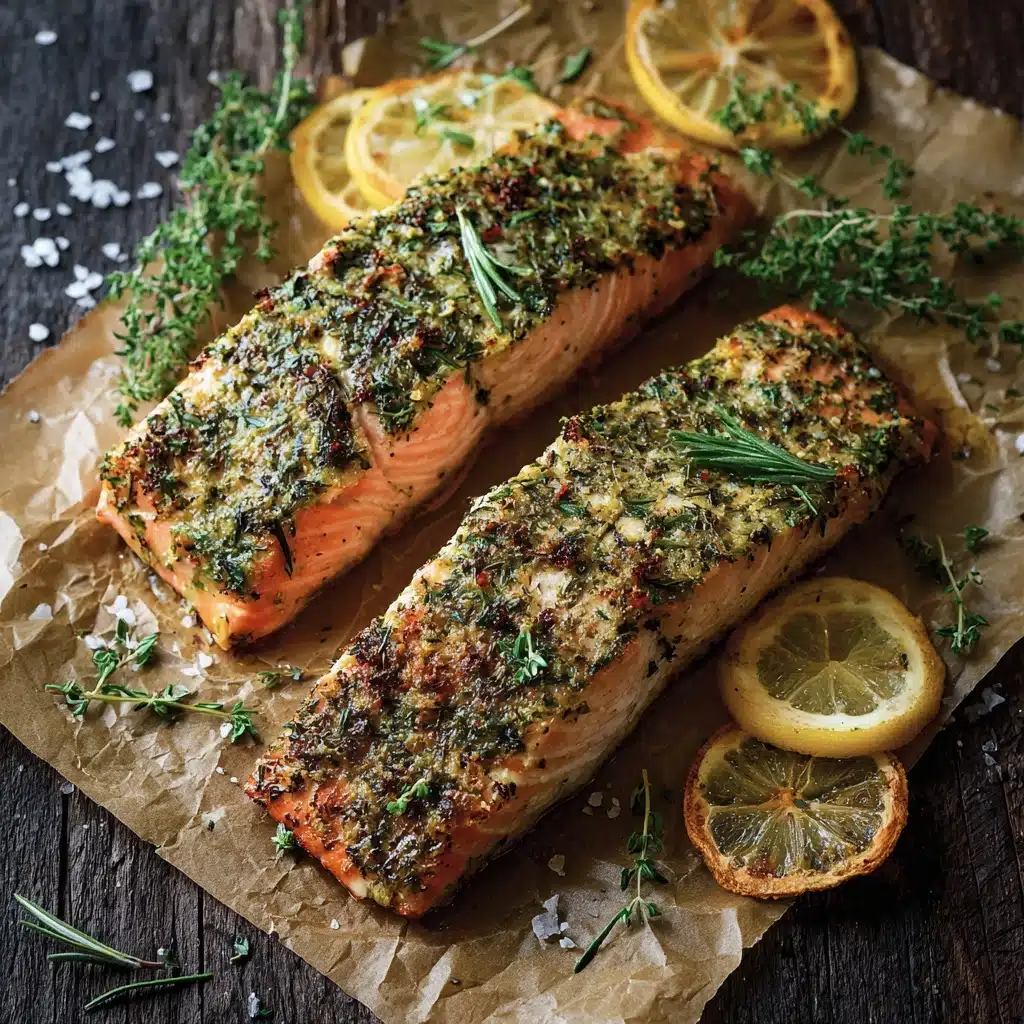
Garnishes
Fresh herbs like parsley or dill add a lively green contrast and brighten each bite with their subtle earthiness. A few lemon wedges on the side can also boost the natural citrus notes of the dish and offer a squeeze of extra freshness.
Side Dishes
For a complete and satisfying meal with your Baked Salmon Fillets Dijon, pair the dish with steamed vegetables such as asparagus, green beans, or broccoli. Fluffy rice or roasted baby potatoes work beautifully to absorb the flavorful glaze, balancing texture and heartiness on the plate.
Creative Ways to Present
For a stylish presentation, serve the salmon on a bed of lightly dressed baby spinach or arugula to add a peppery twist. You might also garnish with edible flowers or a drizzle of extra virgin olive oil for a restaurant-quality touch right at home.
Make Ahead and Storage
Storing Leftovers
If you have any leftovers, place them in an airtight container and store in the refrigerator. The salmon will stay fresh for up to 2 days, allowing you to enjoy this delicious dish again without losing any flavor.
Freezing
While fresh salmon is best, you can freeze cooked fillets if needed. Wrap each piece tightly in plastic wrap and then in foil or a freezer bag. They will keep for up to 2 months. Thaw slowly in the refrigerator before reheating.
Reheating
To reheat without drying out the salmon, warm it gently in a preheated oven set to 275°F (135°C) for about 10 minutes, or until heated through. Avoid microwaving as it can toughen the delicate fish texture.
FAQs
Can I use other types of mustard instead of Dijon?
Dijon mustard has a unique tangy and smooth flavor that balances perfectly with honey and lemon. While you can experiment with whole grain or yellow mustard, the flavor profile will change. Dijon remains the best choice for this recipe.
Is it necessary to keep the skin on the salmon?
Keeping the skin on helps the fillets hold their shape during baking and adds a bit of crispiness if you choose to finish under the broiler. It’s a matter of preference, but the skin also protects moisture and flavor.
Can I prepare the glaze in advance?
Absolutely! The mustard glaze keeps well in the fridge for up to 2 days. Preparing it ahead saves time and lets the flavors meld even more. Just give it a quick whisk before using.
What if I don’t have fresh garlic?
Garlic powder can be a substitute in a pinch, but fresh minced garlic provides the brightest, most aromatic flavor. If using powder, start with about 1/2 teaspoon and adjust to taste.
How do I tell when the salmon is perfectly cooked?
Look for salmon that flakes easily with a fork and has an opaque appearance in the center. Overcooking will make it dry and chalky, so watch it closely after the 12-minute mark for the best results.
Final Thoughts
Sharing my love for Baked Salmon Fillets Dijon feels like introducing a long-time friend to a new favorite spot. It’s a dish that blends simple ingredients into something truly special, capturing rich flavors and a comforting warmth in every bite. Give it a try—you might find your new go-to meal for both busy nights and special dinners alike.
Print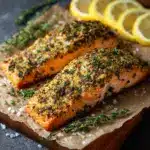
Baked Salmon Fillets Dijon Recipe
- Total Time: 25 minutes
- Yield: 4 servings 1x
- Diet: Low Fat
Description
This baked salmon fillets recipe features tender salmon topped with a flavorful Dijon mustard glaze, enhanced with honey, garlic, and lemon juice. It’s a simple, healthy, and delicious dish perfect for a quick weeknight dinner or an elegant meal.
Ingredients
Salmon Fillets
- 4 fillets salmon (6 oz each)
Dijon Mustard Glaze
- 4 tablespoons Dijon mustard
- 2 tablespoons olive oil
- 1 tablespoon honey
- 1 tablespoon fresh lemon juice
- 2 cloves garlic (minced)
Seasonings and Garnish
- Salt, to taste
- Pepper, to taste
- Fresh parsley or dill (optional, for garnish)
Instructions
- Preheat the Oven: Preheat your oven to 400°F (200°C) to ensure it’s hot and ready for baking the salmon fillets.
- Prepare the Mustard Glaze: In a mixing bowl, whisk together the Dijon mustard, olive oil, honey, fresh lemon juice, and minced garlic until the mixture is smooth and well combined.
- Season the Salmon: Place the salmon fillets in a baking dish with the skin side down. Season each fillet generously with salt and pepper to enhance the flavor.
- Apply the Glaze: Brush the Dijon mustard glaze generously over each salmon fillet, making sure each piece is evenly coated for maximum flavor.
- Optional Foil Cover: If you want to keep the salmon moist, loosely cover the baking dish with aluminum foil before baking.
- Bake the Salmon: Place the dish in the preheated oven and bake for 12-15 minutes or until the salmon flakes easily with a fork and the center is opaque, indicating it is cooked through.
- Rest and Garnish: Remove the salmon from the oven and let it rest for a few minutes. Garnish with fresh parsley or dill if desired to add color and fresh herbal flavor.
- Serve: Serve the baked salmon warm with your favorite side dishes like steamed vegetables, rice, or a fresh salad for a complete meal.
Notes
- You can substitute honey with maple syrup or agave nectar for a different sweetness profile.
- For a spicier version, add a pinch of cayenne pepper or smoked paprika to the glaze.
- If you prefer crispy skin, bake uncovered or broil for the last 1-2 minutes.
- Check the salmon thickness before baking; thicker fillets may require slightly longer cooking time.
- Use fresh lemon juice for best flavor, as bottled lemon juice can be less vibrant.
- Prep Time: 10 minutes
- Cook Time: 15 minutes
- Category: Dinner, Main Course
- Method: Baking
- Cuisine: American/European
Nutrition
- Serving Size: 1 salmon fillet (6 oz)
- Calories: 320
- Sugar: 4 g
- Sodium: 350 mg
- Fat: 18 g
- Saturated Fat: 3 g
- Unsaturated Fat: 13 g
- Trans Fat: 0 g
- Carbohydrates: 5 g
- Fiber: 0 g
- Protein: 34 g
- Cholesterol: 85 mg
Keywords: baked salmon, Dijon mustard salmon, healthy salmon recipe, quick salmon dinner, honey mustard salmon

